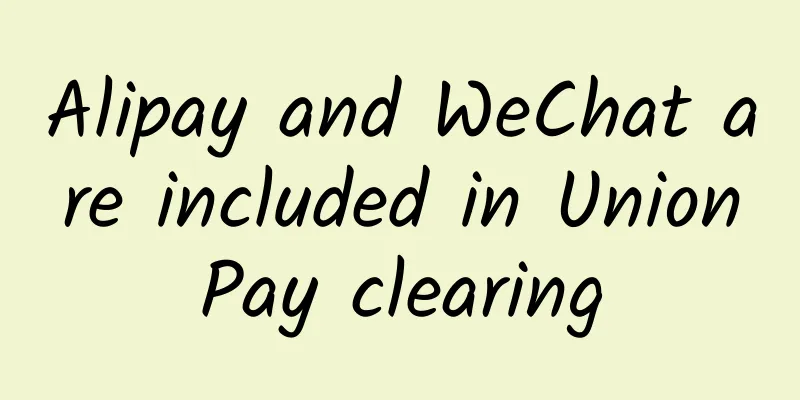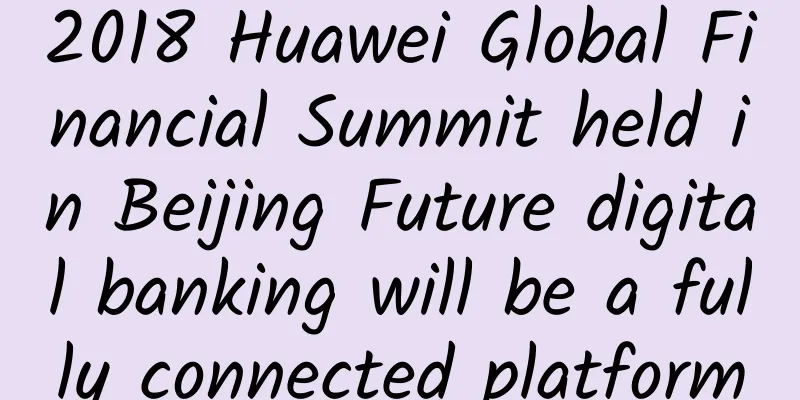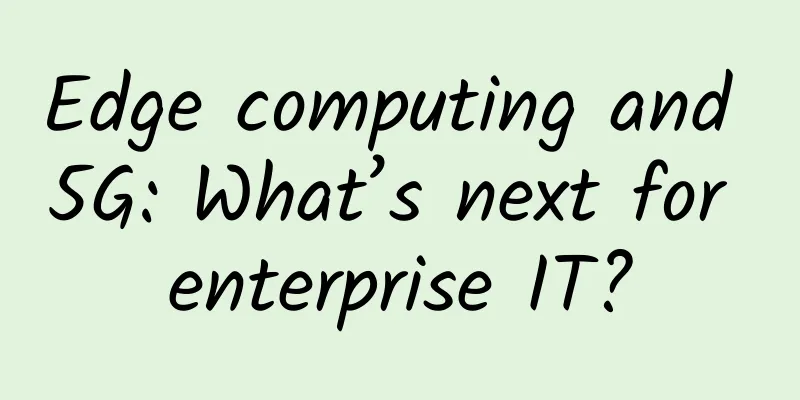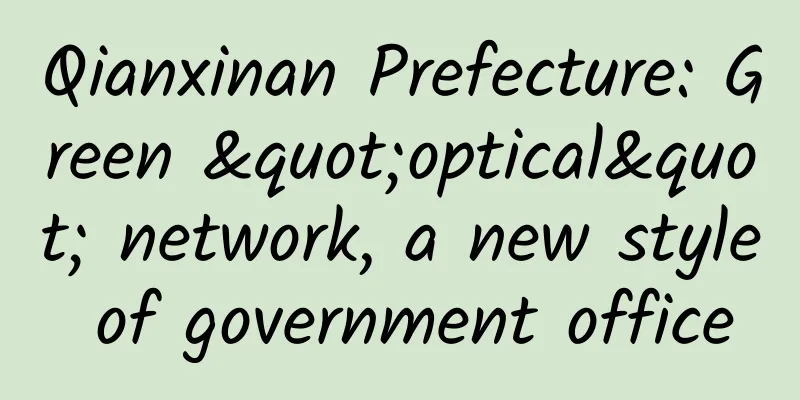Alipay and WeChat are included in UnionPay clearing

|
As the deadline for the payment industry to "disconnect direct links" approaches, industry giants Alipay and WeChat Pay are about to be "enrolled" in clearing institutions. On March 15, the reporter learned that a "Work Plan for the Connection of WeChat and Alipay Barcode Payment Services to the UnionPay Platform" showed that the payment collection business of WeChat and Alipay will be connected to UnionPay. The direct connection model that has troubled regulators for many years is about to become history. "Three Kingdoms" becomes "a game of chess" In the payment market, the situation of "Three Kingdoms" among UnionPay, Alipay and WeChat Pay may become history. According to this access plan, there will be two major changes after WeChat and Alipay are connected to UnionPay: first, in terms of online transactions, merchant submissions and online transactions between acquiring institutions and WeChat will be processed through UnionPay; second, clearing business will be cleared through the central bank's large-value system.
According to the "Barcode Payment Business Specifications (Trial)" issued by the central bank, when banks and payment institutions conduct barcode payment business involving inter-bank transactions, they must go through the inter-bank clearing system of the People's Bank of China or a clearing institution with legal qualifications, and the implementation time is April 1, which also becomes the "deadline" for cutting off the "direct connection". On March 15, the reporter sought confirmation from UnionPay, Alipay and WeChat Pay respectively. Alipay and WeChat Pay both said they would not respond for the time being. China UnionPay responded that since 2017, the central bank has intensively introduced a series of regulatory policies in the payment field. As a clearing institution with legal qualifications, China UnionPay firmly supports and implements the central bank's various regulatory policies, and actively promotes industry-related institutions to accelerate market regulation actions and implement various regulatory policies. In addition to the changes in the overall logical architecture, the access plan also clarifies the details. For example, in online transaction processing, it is divided into three situations: merchant submission, being scanned, scanning the acquiring institution code, and scanning the WeChat or Alipay code, and there are different processes accordingly. Another detail is the handling of dispute errors. The plan shows that if a dispute occurs in a transaction through WeChat or Alipay, the acquirer will temporarily handle the error in accordance with the transaction inquiry and return methods currently provided by A&T, and will gradually migrate to the dispute error handling rules of UnionPay standards in the future; if a dispute occurs in a transaction through UnionPay's existing standard App, the acquirer will handle the error in accordance with UnionPay's current business rules. Because this connection may involve a large number of existing merchants and transactions, the plan shows that the overall principle is to "minimize changes to WeChat, Alipay and acquiring institutions, so the existing excuses and reconciliation file formats of WeChat and Alipay will be temporarily used." At the same time as this plan, there was another piece of news: UnionPay has recently conducted training on the WeChat and Alipay access to UnionPay solutions, with many units participating. The training introduced the WeChat and Alipay access to UnionPay process, technical solutions and principles, and also explained how existing merchants and new users of WeChat and Alipay can access the network. The market described that the "Three Kingdoms" situation in the payment market is about to become "a chess game". Disconnecting direct connections is imminent Although none of the three institutions have confirmed it, the purpose behind this action is clear, which is to cut off the direct connection. As UnionPay mentioned in its reply, in 2017, the central bank issued several documents to regulate the payment industry. One of the rigid requirements is that payment institutions must cut off the direct connection with banks and must complete the clearing through legal clearing institutions. There are other actions taken by institutions before that prove that severing direct connection is an inevitable trend. At the end of January this year, UnionPay announced that the new generation of UnionPay cardless business transfer and clearing platform officially launched large-scale business carrying services for various member institutions, which is also the implementation of the regulatory requirements to sever direct connection. Why did the central bank make this request? Industry insiders said that the direct connection model bypassed the clearing system, making it impossible for banks and the central bank to grasp specific transaction information and the accurate flow of funds, and the problem was soon exposed. The risk control levels of these payment institutions of varying sizes vary, and some institutions lack effective risk prevention and control measures. Once risks arise, they may be transmitted to the banking system and affect financial stability. At the same time, the direct connection between payment institutions and banks makes funds and information extremely opaque, forming a "dead corner" outside of supervision. For consumers, the safety of funds is also worrying. "Disconnecting direct connection" has become a general trend. However, whether third-party payment institutions, especially Alipay and WeChat Pay, the two "oligarchs" in the third-party payment field, have difficulty in cutting volume from UnionPay is also a matter of concern to the market. Public data shows that the scale of third-party mobile payments reached 120 trillion yuan in 2017, among which Alipay and WeChat Pay have a stable "duopoly" pattern, with a combined market share of 94%. In addition, from a certain perspective, UnionPay, Alipay and WeChat Pay are market competitors. Will the latter two be willing to cut volume? Wang Pengbo, a payment analyst at Analysys, believes that the central bank is very determined to "disconnect direct connection", so the access process should not encounter too much resistance or difficulty. The two major clearing institutions are facing a head-on competition After bidding farewell to the three-party competition model of payment giants, UnionPay ushered in competition from ChinaNet Union. For this reason, since the news of ChinaNet Union's establishment came out, there have been voices in the market that there may be business overlap between the two clearing institutions. As for UnionPay, there was a view that the boundaries between online and offline businesses were not clear at present, and UnionPay lost the opportunity to do Internet payment clearing on the basis of bank card clearing, and this business could not be obtained. However, it seems that UnionPay is not willing to give up this piece of cake. In fact, UnionPay's entry into the "disconnection of direct connections" was expected by the market. Xue Hongyan, director of the Internet Finance Center of Suning Financial Research Institute, said that in the payment market structure, third-party payment institutions occupy a large market share. Since they want to cut the volume from clearing institutions, it is impossible not to let UnionPay in. Dong Ximiao, a senior researcher at the Chongyang Institute for Financial Studies at Renmin University of China, said that the central bank has stepped up efforts to rectify the chaos in the payment market, especially in terms of "disconnecting direct connections", and UnionPay and ChinaNetsUnion are also cooperating with the central bank's measures. With the addition of UnionPay, payment institutions now have one more option. So for payment institutions, what is the difference between connecting to UnionPay and connecting to ChinaNet? Who can attract more payment institutions? Xue Hongyan told reporters that from the perspective of the policy requirements of cutting off direct connections, connecting to UnionPay or ChinaNet is compliant. From the perspective of market competition, ChinaNet has equity relations with third-party payment institutions and is a pure clearing institution, so it has no competitive relationship with third-party payment institutions; while UnionPay is both a clearing institution and a payment institution, so it has a certain competitive relationship with third-party payment. Xue Hongyan further suggested that there is no mandatory requirement at the policy level for payment institutions to connect to UnionPay. However, in order to ensure the smooth development of various businesses under the inter-linking model, it is a better choice to connect to both UnionPay and ChinaNetsUnion clearing organizations at the same time. From the perspective of consumers and merchants, Xue Hongyan pointed out that after the clearing institutions are connected, the QR code in barcode payment is expected to be standardized. From the perspective of merchants, it is enough to receive one code, which is more convenient. At the same time, in theory, all payment tools can use the unified QR code to reach the terminal consumption scene. From the perspective of consumers, the range of payment tools to choose from is wider, and you can use whichever one you want, which provides a better consumer experience. Analysts believe that UnionPay and China National Payment Corporation will face direct competition in the future, and the market share of both parties depends on the service level and capabilities in various aspects such as transaction processing speed and fund clearing efficiency. Xue Hongyan believes that in the future, online business will most likely be exclusively owned by China National Payment Corporation, which will help it grow and develop; in the field of offline business (including barcode payment), the two clearing institutions will be encouraged to engage in appropriate competition. |
<<: "Number portability" is the only effective solution to China Unicom's development difficulties
>>: A brief history of the development of mobile communication technology
Recommend
Some works of the first 51CTO Developer Competition have been revealed, waiting for you to add to it!
/* Live to change the world Here, every work may ...
What is the difference between wireless repeater and Mesh? This article will teach you how to use your home network well
At present, people's lives are becoming riche...
Avaya's 20th anniversary marks its start again. Fu Lili, president of Greater China, says Avaya will transform to a cloud model
[51CTO.com original article] On October 1, 2000, ...
Yan Wangjia, a member of the National Committee of the Chinese People's Political Consultative Conference, submitted five proposals to the two sessions, calling for strengthening information security supervision
[51CTO.com original article] On March 3, the firs...
Huobo Technology Chen Ye: To B is the middle platform, To C opens up the content consumption market
Recently, Chen Ye, founder and CEO of Huobo Techn...
RepriseHosting: Seattle servers from $27.97/month - L5640/16G memory/1TB or 240G SSD/1Gbps bandwidth
RepriseHosting is a foreign hosting company found...
Things about UDP protocol
UDP (User Datagram Protocol) protocol, translated...
Tian Suning: From the Internet of Everything to the Intelligent Internet, a new company species, "customer operator", is born
From November 7 to 9, Wuzhen, a water town in the...
Huawei releases next-generation CloudLink video conferencing solution
[Beijing, China, September 6, 2019] Huawei held a...
The existing network is difficult to achieve great success, will 5G be the savior of the Internet of Things?
5G is the fifth generation of mobile cellular tec...
Evolution of network automation to network intelligence
In the process of industrial digitalization, Inte...
What are the uses of 5G? How does 5G work?
5G is the present and the future, the next genera...
Data analysis tools that can also be used by operations: Quick BI ad hoc analysis detailed explanation
Quick BI ad hoc analysis: enabling business to ac...
Sharktech: 1Gbps unlimited traffic high-defense server starting at $79/month, 10Gbps unlimited traffic starting at $329/month, data centers in Los Angeles/Denver/Netherlands
Sharktech continues to offer 10Gbps port server s...









